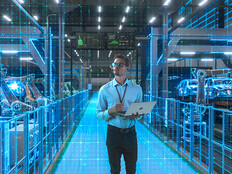BIZTECH: What’s your take on the state of retail right now?
ANCKETILL: Things are still very difficult for retailers. They are still challenged by the cost-of-living crisis, with consumers tightening their belts all over the world. Signs of the times include supply chain challenges and extreme weather disruptions, especially in the U.S. — and that’s a supply chain disruption extraordinaire. There are now significant parts of the U.S. that are challenged by extreme weather because of climate change, and that’s not going to go away.
As if that weren’t enough, we have staffing shortages. This has resulted from many things: COVID led to a desire for hybrid work, but certain workers, like in retail, have to work from a certain somewhere, whether they like it or not. And today, they don’t like it. Therefore, you have an even greater difficulty retaining workers. It’s an endemic issue that will be with us for some time.
Also, that hybrid work trend has led to the hollowing-out of many city centers. When people are not in the office five days a week, what happens to food and beverage and retail serving those areas?
My view overall? It’s not good.
LEARN MORE: How retailers are pushing toward digital transformation.
BIZTECH: How are retailers responding to these challenges?
ANCKETILL: Deploying technology to accrue efficiencies is essential. It’s something retailers have been doing for many years, but they’re realizing now that they need to speed that up. They’re seeking things like real-time, full-inventory transparency, allowing you to make local physical stores into micro fulfillment centers. This makes your physical estate work harder, so it’s not just a shop for the people who happen to be walking by; it’s now part of your e-commerce platform. The retailer Zara has a store mode on its app, for example, which allows a customer to see only the inventory in a given local store, which you can then reserve and pick up in half an hour.
They also need to identify the customer service options that are really important to consumers. That could be things like curbside pickup or special services for people with kids. It’s about finding the right customer experiences that people value and doubling down on those.
DIVE DEEPER: Why customer experience technology is vital to modern digital work environments.
BIZTECH: What lessons have retailers learned over the past three years and how are they applying them today?
ANCKETILL: Consumer behavior returned to normal somewhat more quickly than people expected. Once people were released back into the world, they did return to physical stores. That led to a bubble or two bursting, like the rapid-delivery trend.
However, people did learn that they could get almost anything delivered to their homes. There’s been a ratcheting up, which I think will be permanent, of increased expectation of e-commerce delivery being available from every retailer. There’s also an expectation of greater efficiency. We are now permanently used to the idea of things just being easy. People won’t go back.












